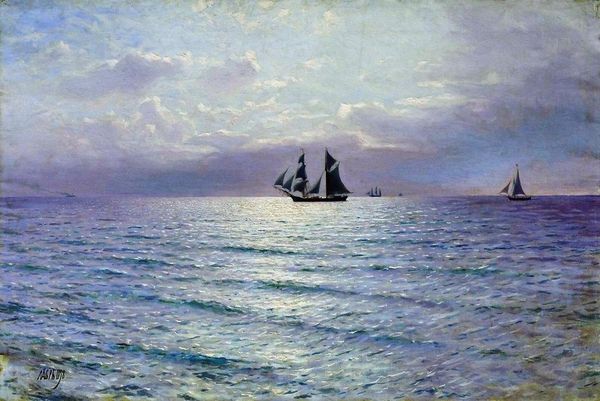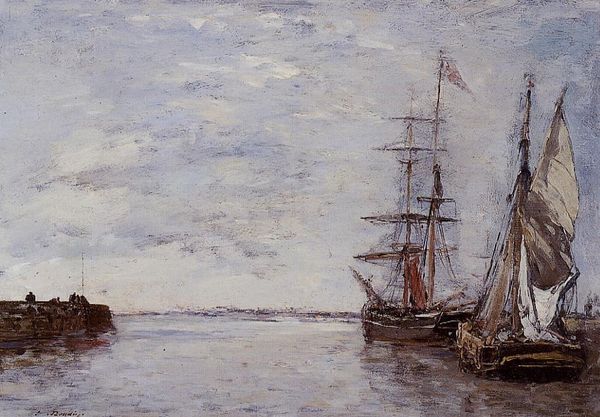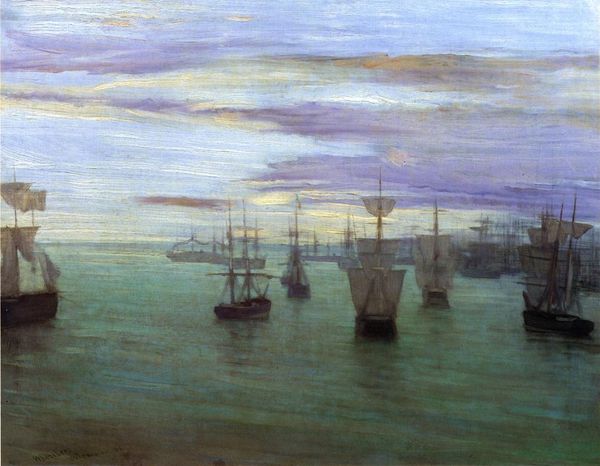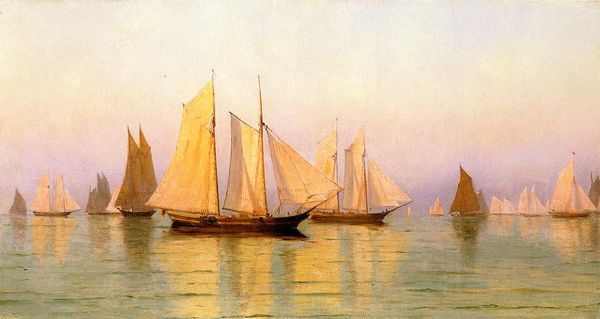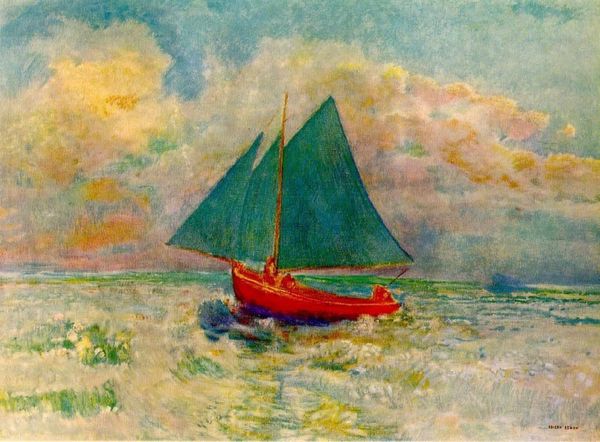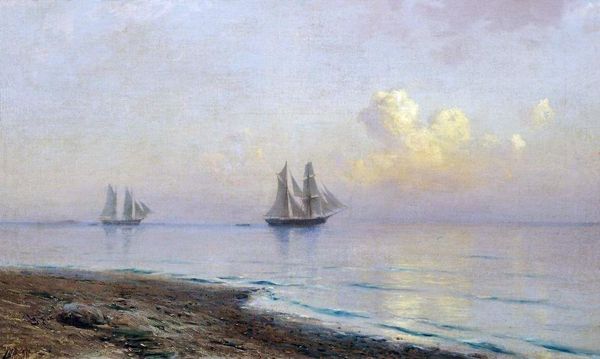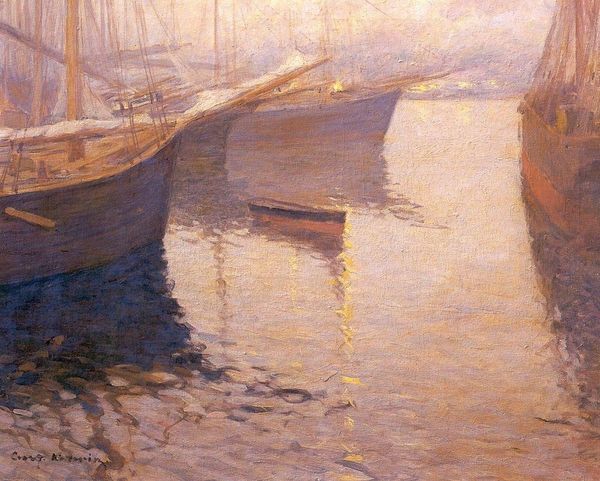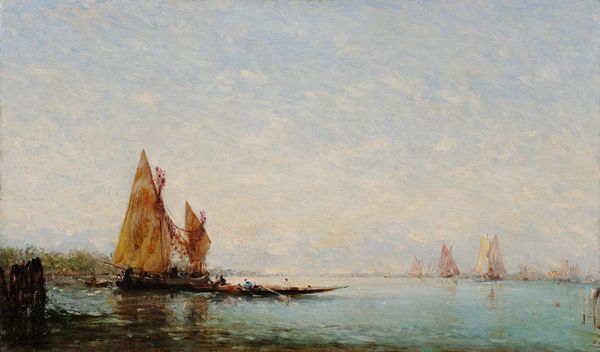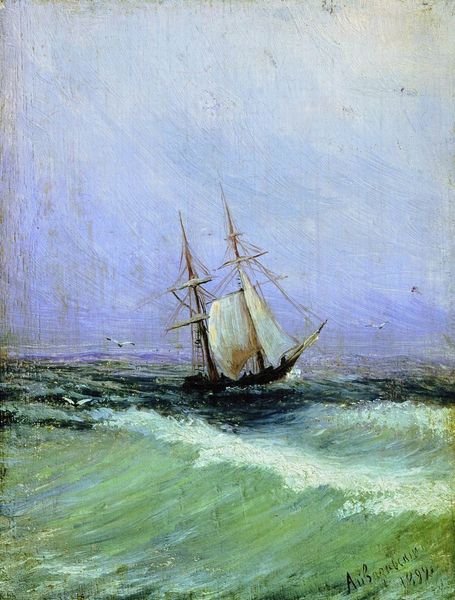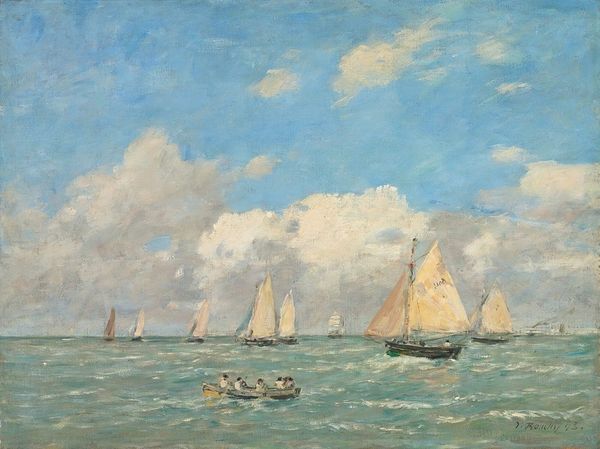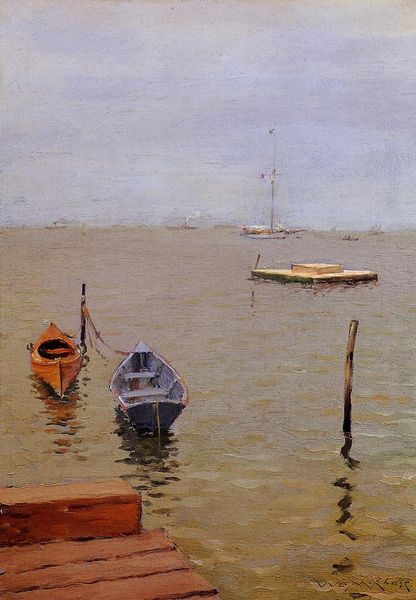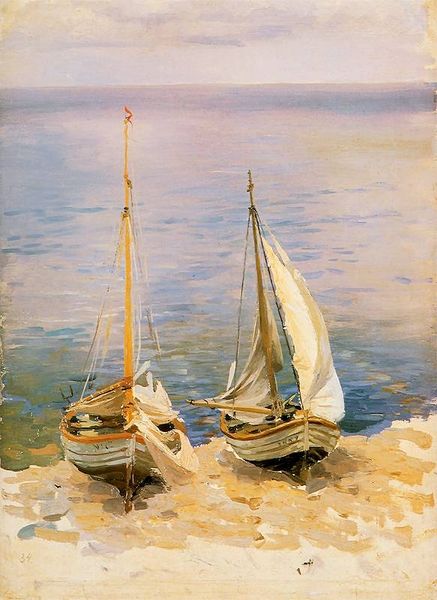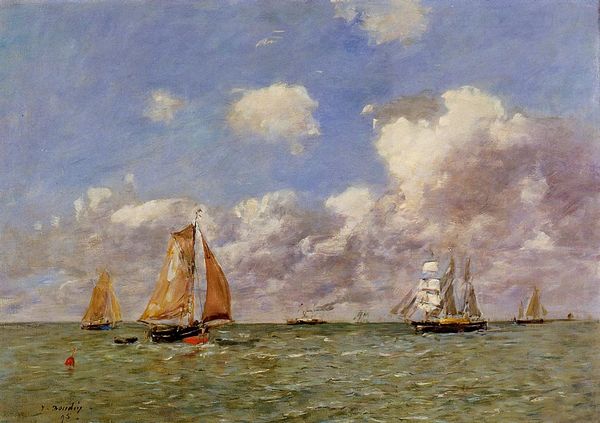
painting, plein-air, oil-paint
#
painting
#
impressionism
#
plein-air
#
oil-paint
#
landscape
#
oil painting
Copyright: Public domain
Editor: So, this is "Fishing Boats at Pourville" by Claude Monet, painted in 1882 using oil on canvas. It feels incredibly still, almost dreamlike with its hazy atmosphere. What strikes you most when you look at this painting? Curator: Initially, the interplay between light and reflection captivates me. Note the near symmetry achieved between the tangible forms of the boats and their spectral counterparts mirrored in the water. This mirroring fractures the image, compelling a deconstruction of the scene beyond a mere representational exercise. Editor: So it's more than just boats on water. It’s how he's showing them to us, right? The way the light bounces. Curator: Precisely. The brushstrokes, applied with a visible lack of blending, actively construct both form and light. Observe how Monet juxtaposes strokes of blues, greens, and yellows to conjure the illusion of shimmering water, rather than directly imitating its appearance. How do these techniques strike you? Editor: I think the brushwork is so loose that it blurs the lines between the boats and the sea. They're distinct objects, but sort of become one and the same. Curator: An astute observation. One could further contend that the formal elements—color, line, texture—transcend their referential roles, creating a self-referential dialogue within the canvas itself. This dialogue effectively destabilizes conventional notions of landscape painting. The subject is the painting itself, the object and the scene it creates. What have you learned from that approach? Editor: It really changes the way I see Impressionism. I think I'm seeing a new meaning to its interest in landscapes, now! Thanks so much for sharing this with me!
Comments
No comments
Be the first to comment and join the conversation on the ultimate creative platform.
